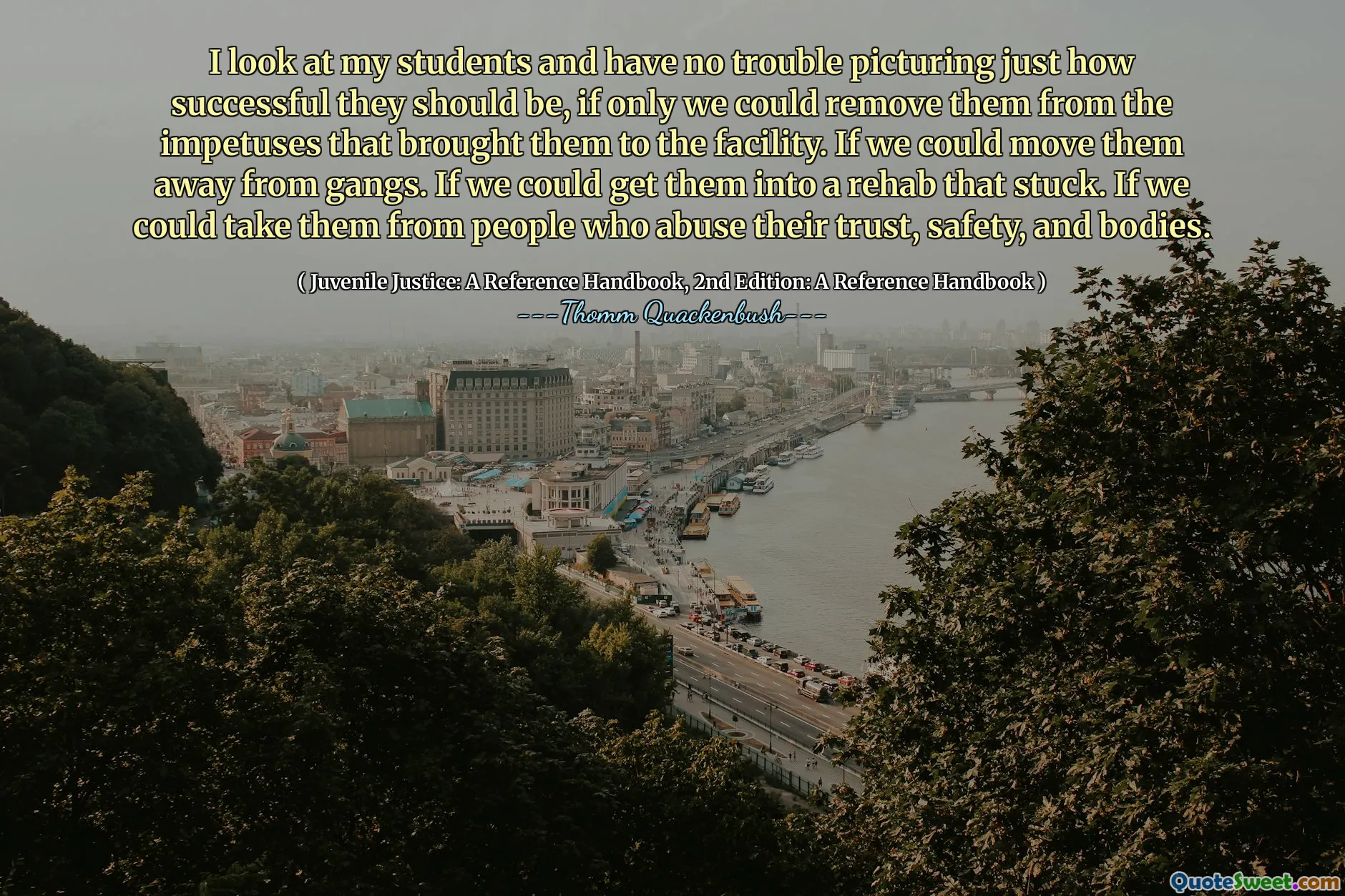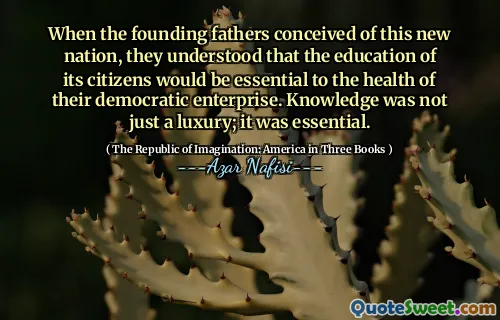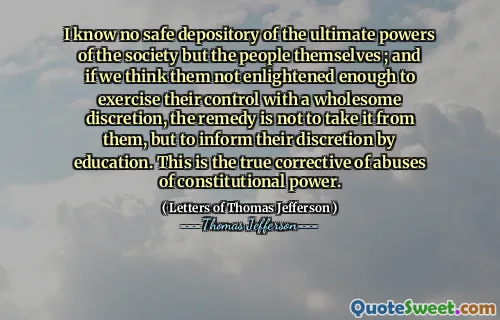
I look at my students and have no trouble picturing just how successful they should be, if only we could remove them from the impetuses that brought them to the facility. If we could move them away from gangs. If we could get them into a rehab that stuck. If we could take them from people who abuse their trust, safety, and bodies.
This quote highlights the profound impact of environmental influences and social circumstances on the development and potential of young individuals. It underscores the importance of addressing the external factors—such as exposure to gangs, substance abuse, and abusive relationships—that hinder youth from realizing their full potential. The speaker envision a scenario where, by removing these detrimental influences, the inherent talents, intelligence, and abilities of students could flourish unencumbered. It prompts us to consider how much context shapes behavior and opportunities; without negative pressures, many young people might achieve successes that seem unattainable given their current circumstances.
From an educational and social perspective, this perspective emphasizes the need for holistic intervention strategies—creating safe, supportive environments where youths can grow and learn without fear or harm. It also raises awareness of systemic issues, highlighting that punishment alone cannot solve underlying problems rooted in societal disparities. Instead, comprehensive approaches that include revitalizing communities, ensuring access to health and rehabilitation services, and fostering trust within vulnerable populations are essential. Tackling these root causes could unlock the potential in countless young lives.
Furthermore, this quote implicitly recognizes resilience and the hope for positive change. If detrimental influences are mitigated, the natural capacities of at-risk youth can be realized. It is a call for compassion, understanding, and action—reminding us that success is often about creating the right environment and opportunities. Society must therefore focus on healing and prevention, ensuring that every child has the chance to succeed free from the corrosive effects of violence, neglect, and abuse.
In essence, the quote challenges us to think critically about the barriers faced by disadvantaged youth and the moral imperative to dismantle these impediments for a more equitable future.






